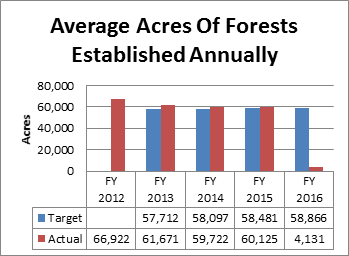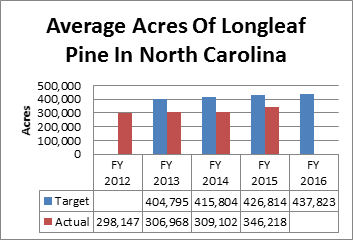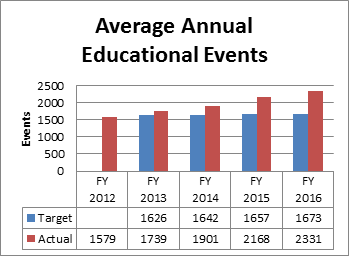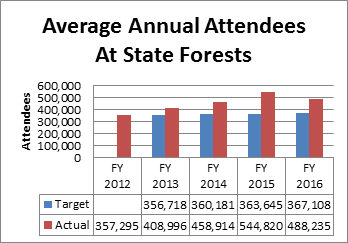Promote the Forests[Home]
(GS 106-895, 106-907)
The Forest Service is responsible for promoting the conservation, development and profitable use of North Carolina's forests. We accomplish this by helping forest landowners establish new forests; supporting existing, new, and emerging forest product markets; and educating youth and adults on the benefits of our forest resources.
Objective - Forest Products Industries
Promote, develop and maintain traditional and new forest products industries.
Forest Products Action Items:
- Utilize NCDA&CS marketing opportunities. Develop a plan to ensure NCFS is an integral part of this effort. Lead - Technical Development Branch
- Publicize the importance of forest industry in NC through strengthened partnerships with NCFA, NCSU, NC Woodlands, ATFS, NCACF, Farm Bureau and others. Utilize these partnerships at the local level to provide a communication/feedback flow. Lead - FM/FD Division
- Market NC to the forest industry as a place to locate and/or expand. Lead - Technical Development Branch
- Additional training for all personnel in forest products markets and utilization, focusing on the local area. Lead - Technical Development Branch and FM Branch
- Actively participate in the development of non ‐traditional forest product markets, such as biomass, green energy, etc. Lead - Technical Development Branch
Objective - Benefits and Services Awareness
Increase public awareness of the benefits of forests and NCFS services available.
Benefits and Services Action Items:
- Key Initiative - Continue with the longleaf pine initiative and develop/implement a plan to address sustainability of other tree species, forest types, and forest ecosystems in decline; to include Atlantic white cedar, shortleaf pine, baldcypress, and bottomland hardwoods. Lead - FM Branch and Technical Development Branch
- Identify key messages and develop publications and radio/tv spots to address benefits on major networks or highly viewed social platforms. Lead - I&E Branch
Objective - State Forests
Increase support to the Education State Forests (ESF) and State Forests (SF)
State Forest Action Items:
- Fund and open Mtn. Island ESF. Lead -State Forester's Office
- Restore Information & Education Branch support staff positions at the Central office to restore functionality of the branch. Lead -State Forester's Office
| Progress Graph | Measures - Safety | Baseline | June 30, 2016 Target |
|---|---|---|---|
 |
Acres of forests established annually. Forest establishment has declined 30 percent over the past 4 years largely due to a downturn in forest product markets. Our goal is to meet demand for forest establishment while striving to maintain or slightly increase 2010-2011 levels. | 57,712 acres/year | 57,712-58,866 acres/year |
| This is a direct measure from the 4220 Forest Management Accomplishment Report for Establishment Acres. The baseline will be Forest Establishment acres for the year ending June 30, 2012, not a five year average, since the trend shows a steady decline over the last five years. The target will be the five previous SFY's ending June 30, 2016. To be reported by the Forest Management/Forest Development Section. Quarterly reporting will be the cumulative year to date acreage, with the annual report to be the current year's achievement. | |||
 |
Acres of longleaf pine in NC. Our goal is to increase the overall acreage 1 to 3% by June 30, 2016. | 389,000 acres | 404,795-437,823 acres |
| This measure comes from data compiled as part of a regional assessment and goal setting effort led by the Longleaf Partnership Council. North Carolina's baseline and goal projections were completed June 2012 and consist of A). Private lands: NC 2003-2011 FIA data for longleaf pine forest type code 141 and longleaf pine-oak forest type code 403; B). Public lands: this is a synthesis of data collected on the actual acres of all known longleaf pine on public lands in NC (federal, state, university, local). Data consists of geospatial data, where available, plantation and management records, and reports from public land management personnel. The target is a 1 to 3 percent annual increase and is based on a number of factors including past establishment trends, financial cost share program impacts and seed source/seedling availability and capacity, among others. Annual data will be reported as it is available. | |||
 |
Number of educational events conducted annually. Our goal is a 3-6% increase by June 30, 2016. | 1,579 events | 1,626-1,673 events |
| This measure is a combination of events entered into the I&E database and the Outreach database. The baseline will be the average of the last five SFY's ending on June 30, 2012. This baseline data will come from all of the I&E accomplishments recorded in the Total Accomplishment Report (TAR) since the I&E database was not implemented during this complete time frame. The target will be the five previous SFY's ending June 30, 2016 and will consist of accomplishments from the TAR and I&E database, excluding any duplicate reporting. To be reported by the Forest Protection Section. The quarterly reporting is the cumulative year to date numbers with the annual reporting being the total number of events for the SFY. | |||
 |
Number of annual attendees at state forests. Our goal is to increase visitation by 3-6% by June 30, 2016. | 346,329 visitors/year | 356,718-367,108 visitors/year |
| This measure will come from the Educational State Forest Reporting system for total attendance and a quarterly reporting from DuPont State Forest on total attendance. The baseline will be the average of the last five SFY's ending on June 30, 2012. The target will be the five previous SFY's ending June 30, 2016. To be reported by the Forest Protection Section. The quarterly reporting is the cumulative year to date numbers with the annual reporting being the total attendance for the SFY. | |||
